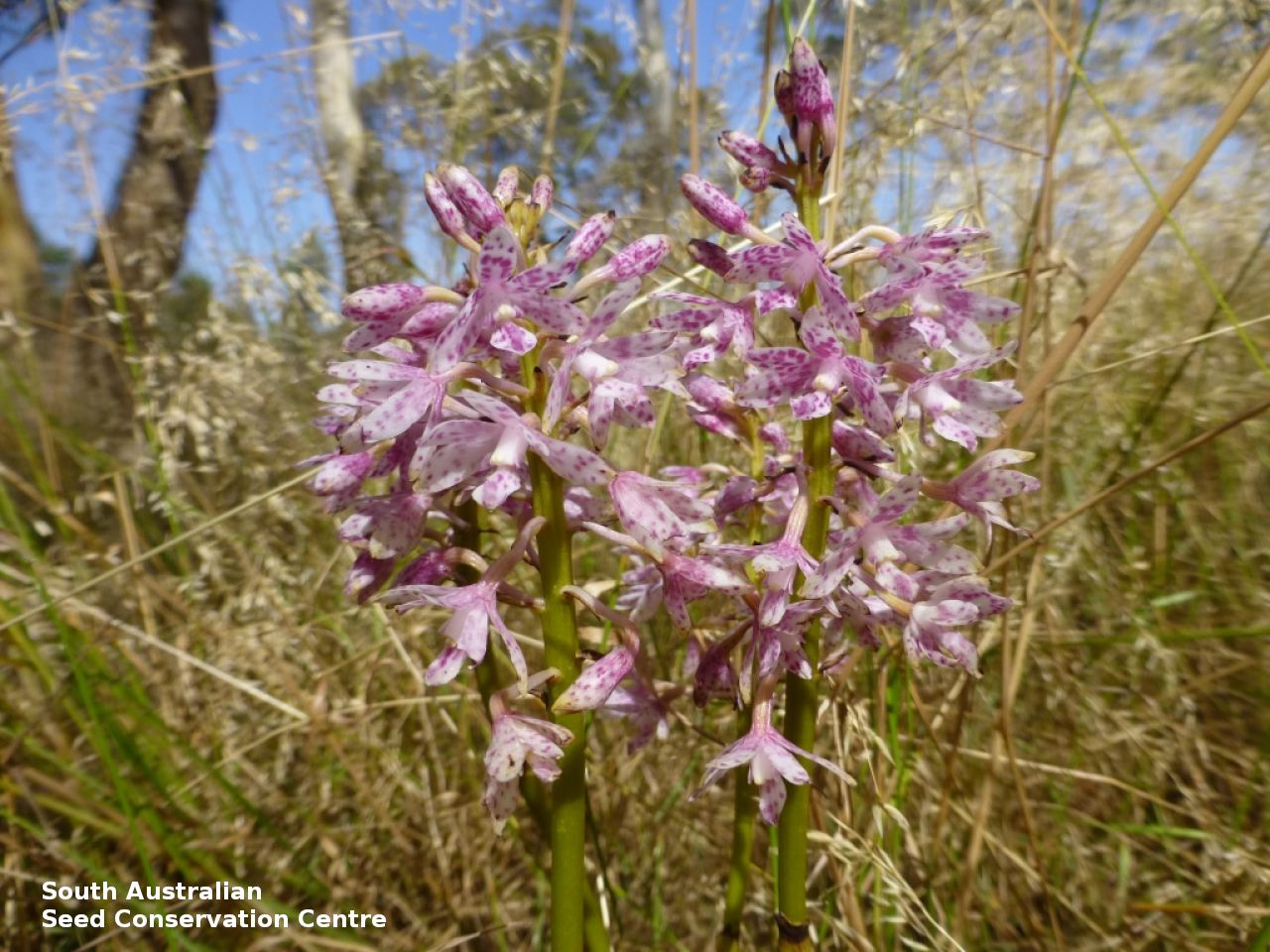
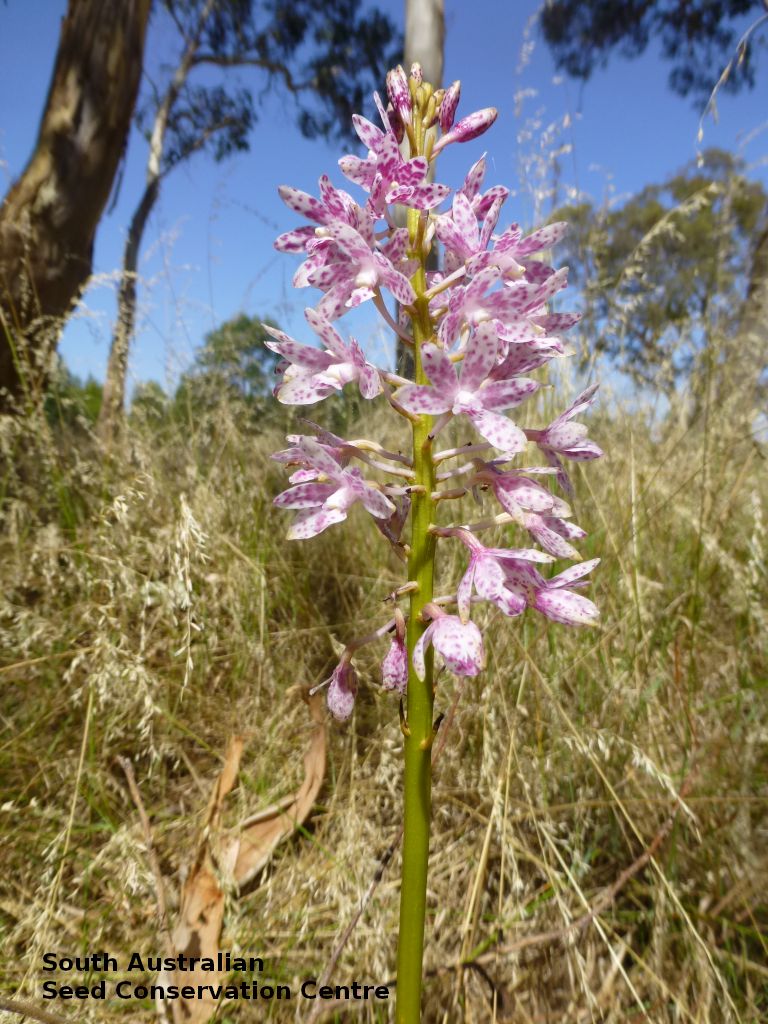
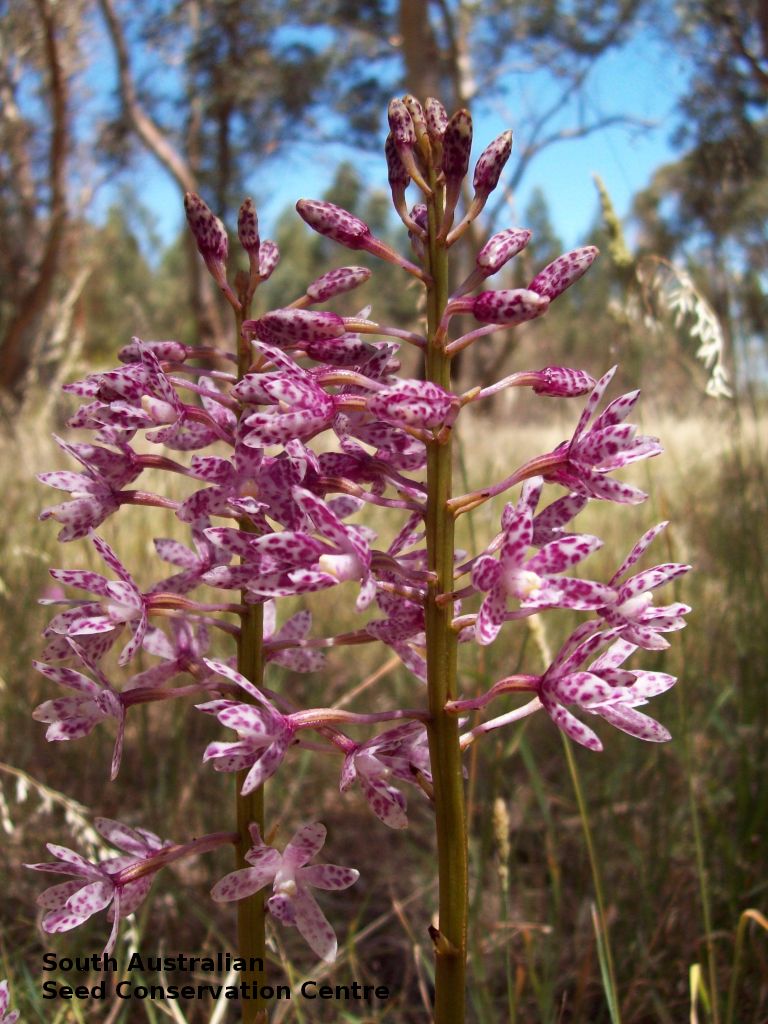
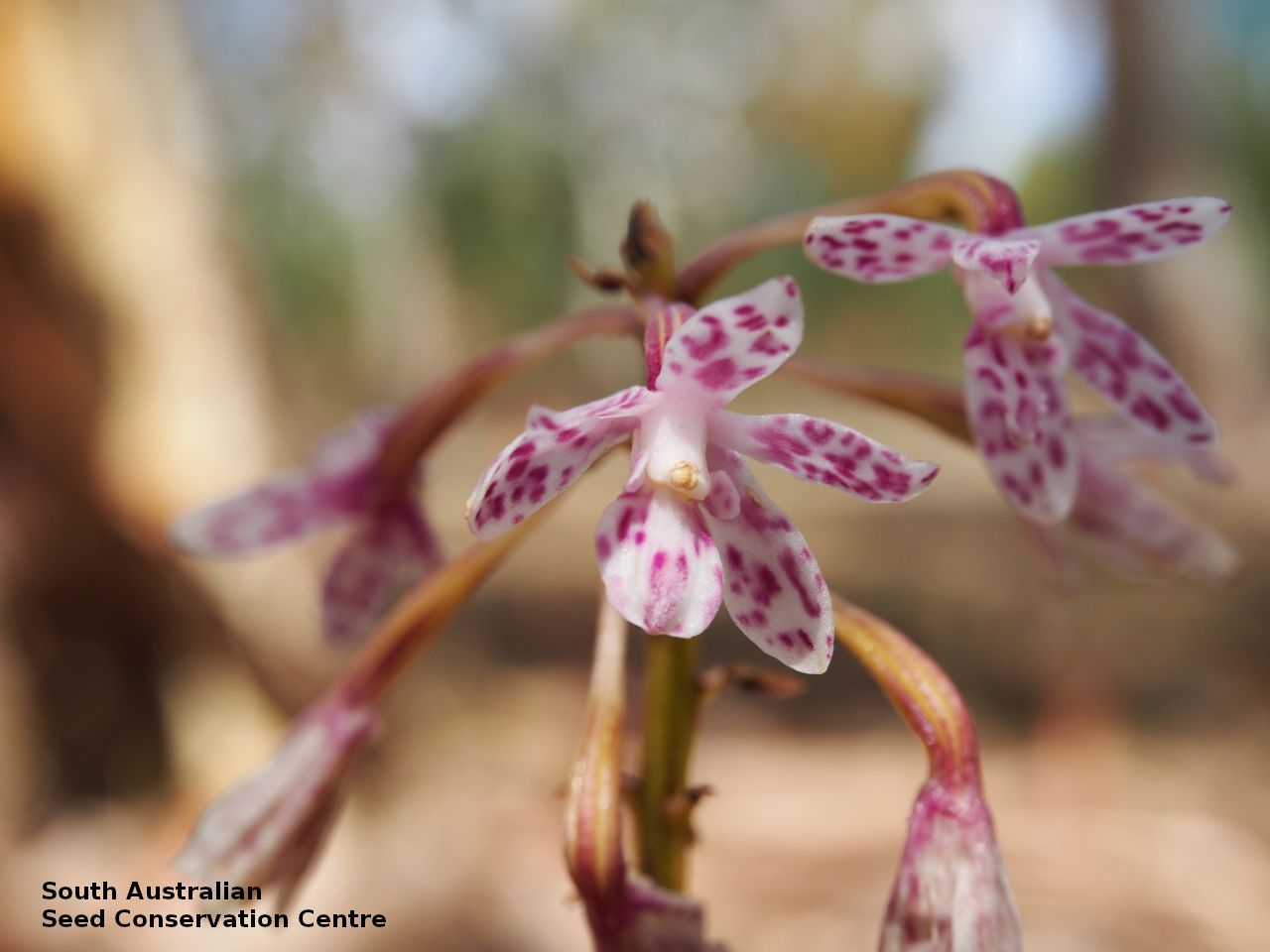
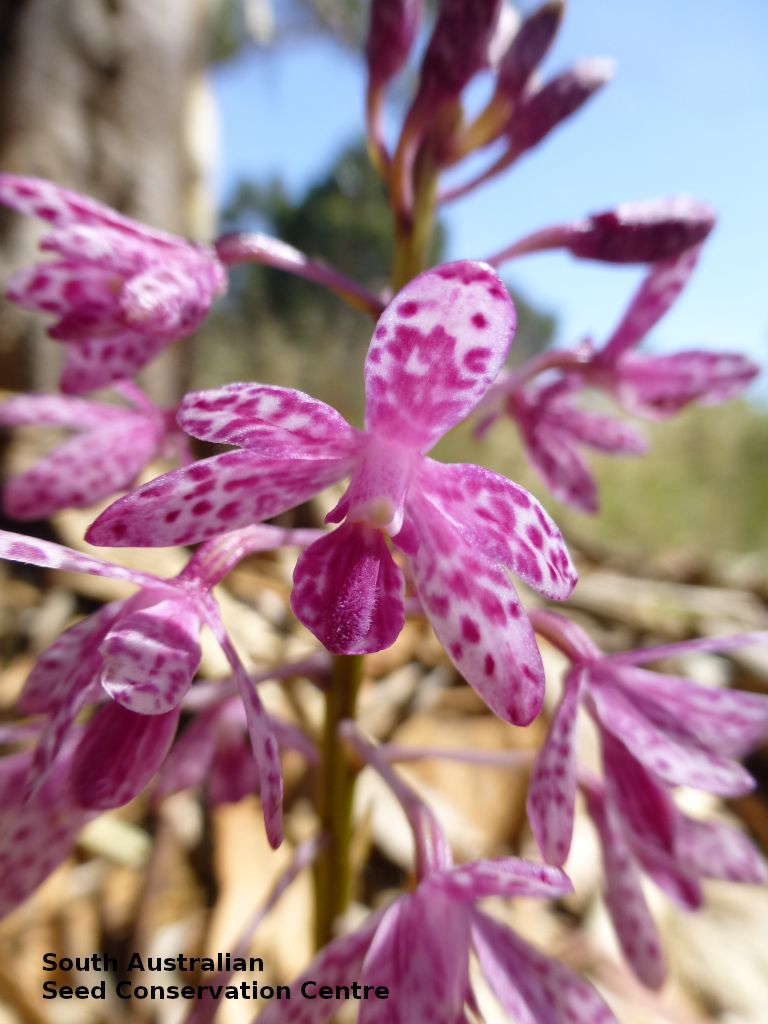
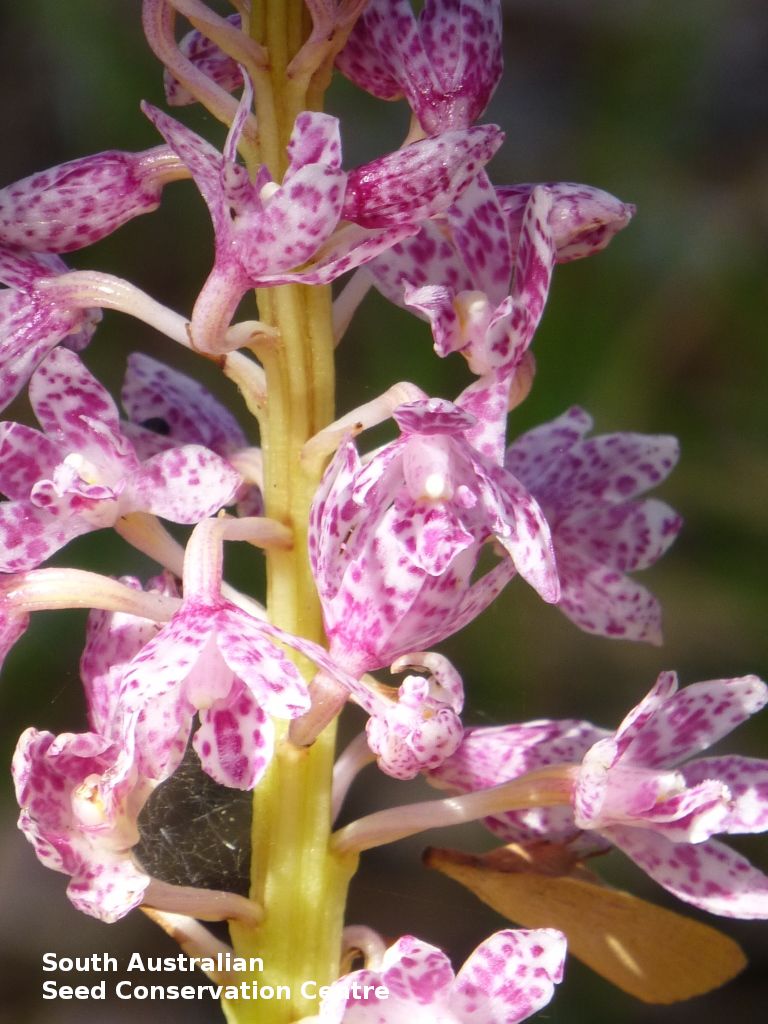
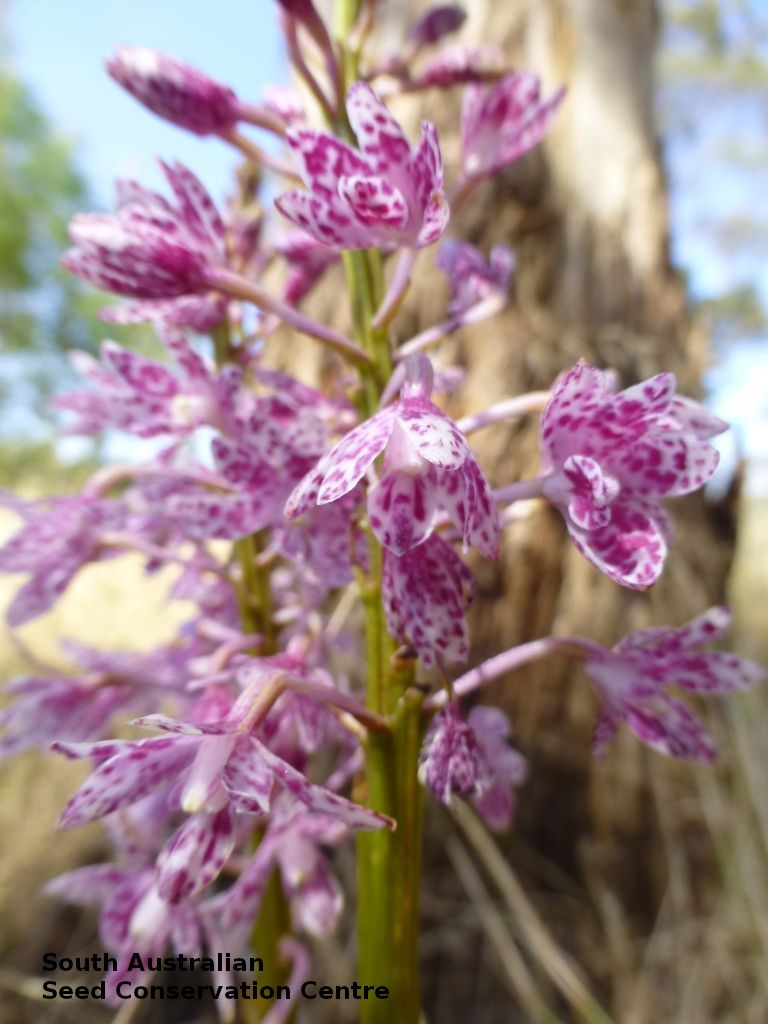
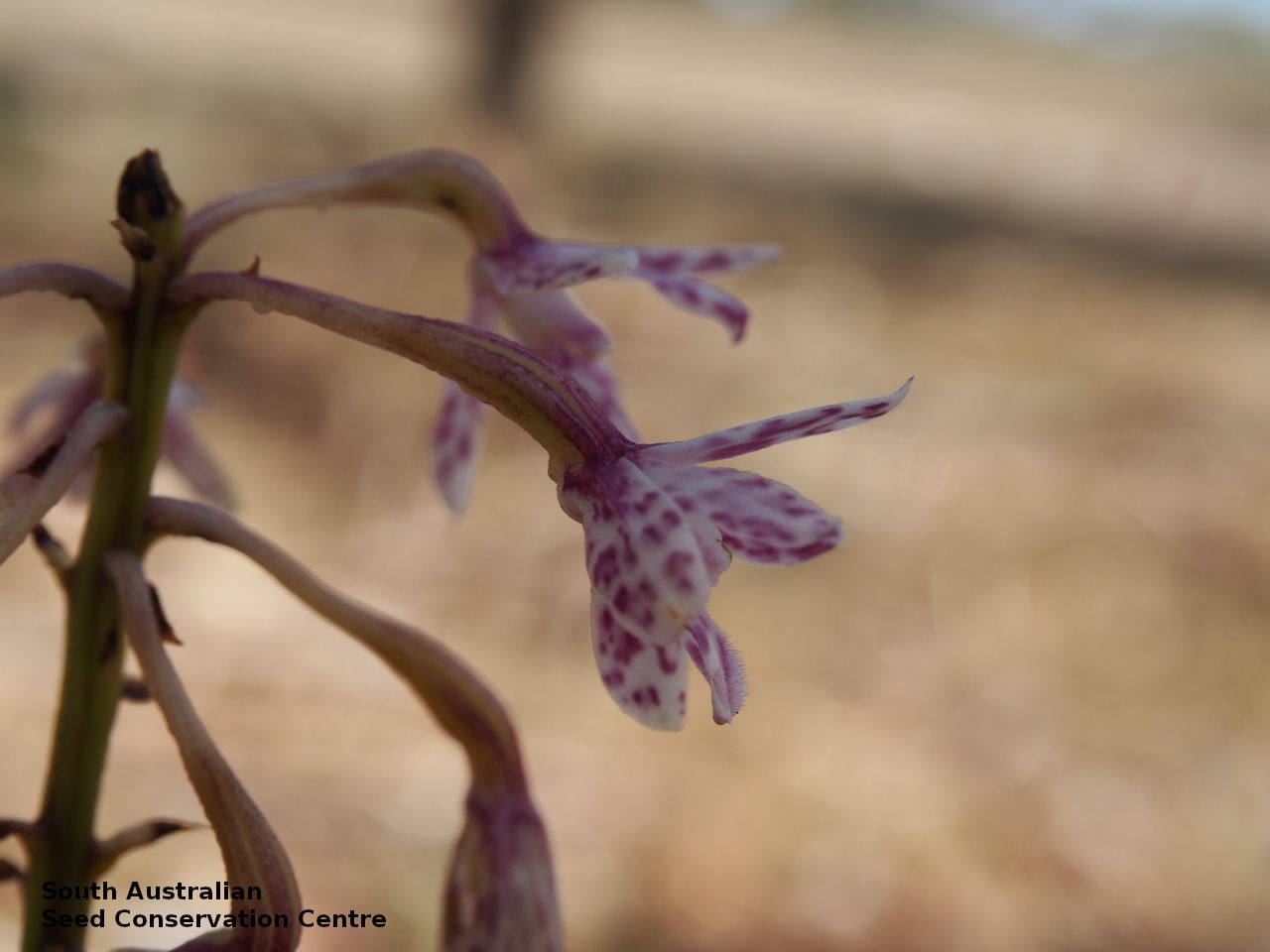
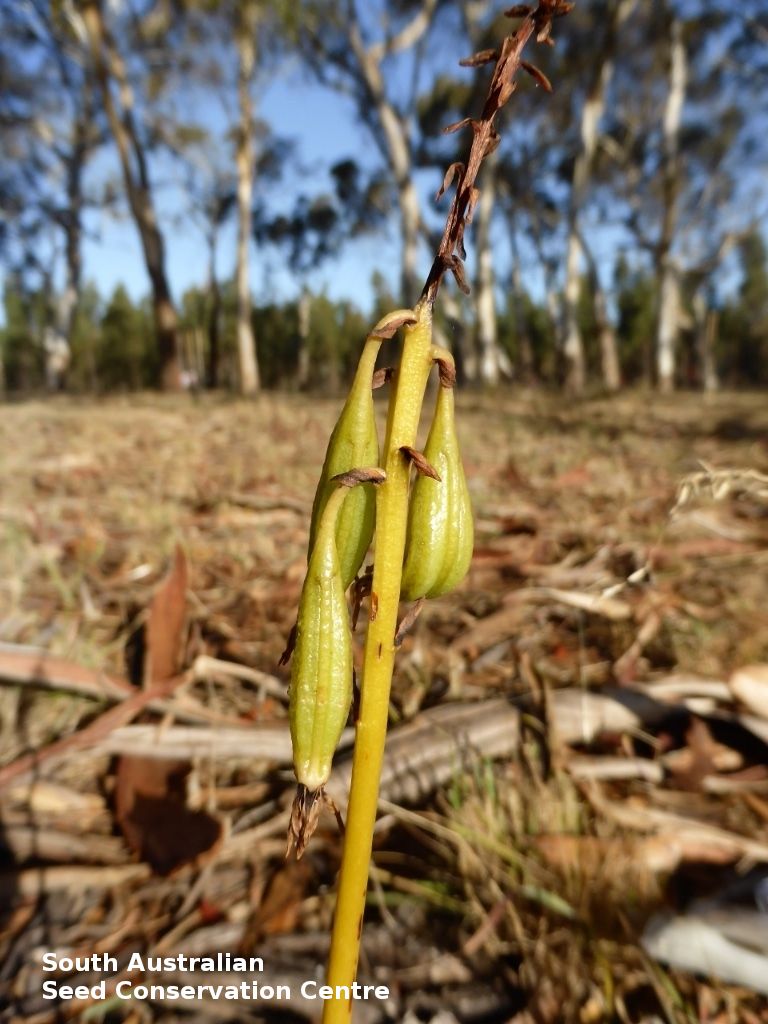
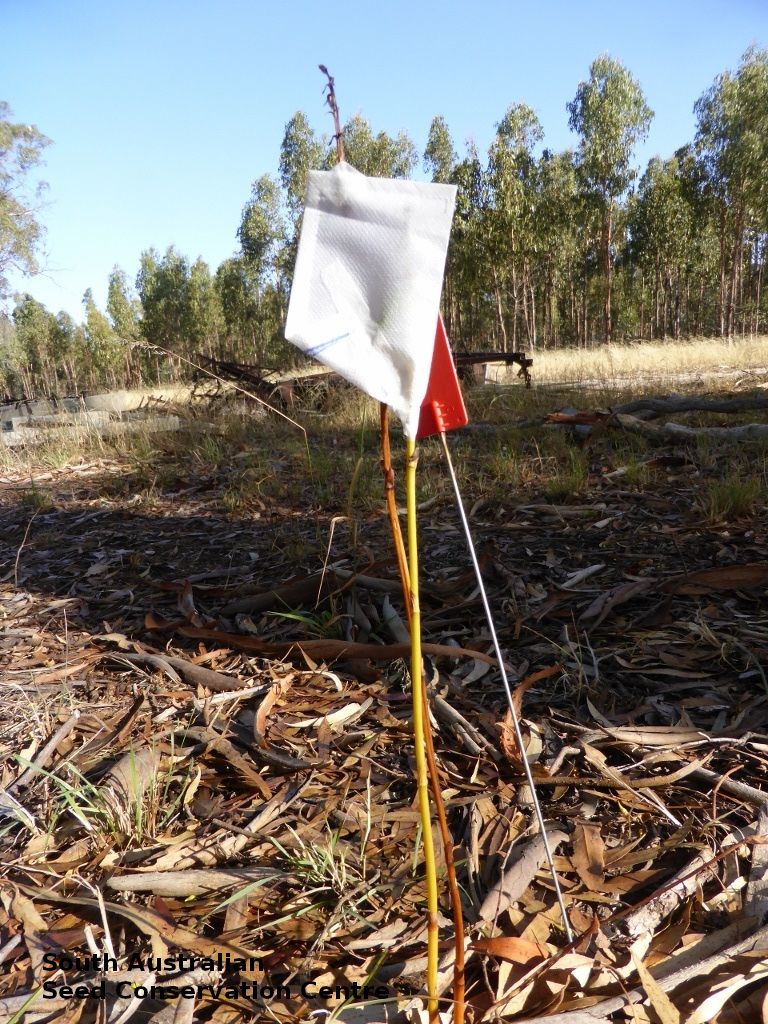
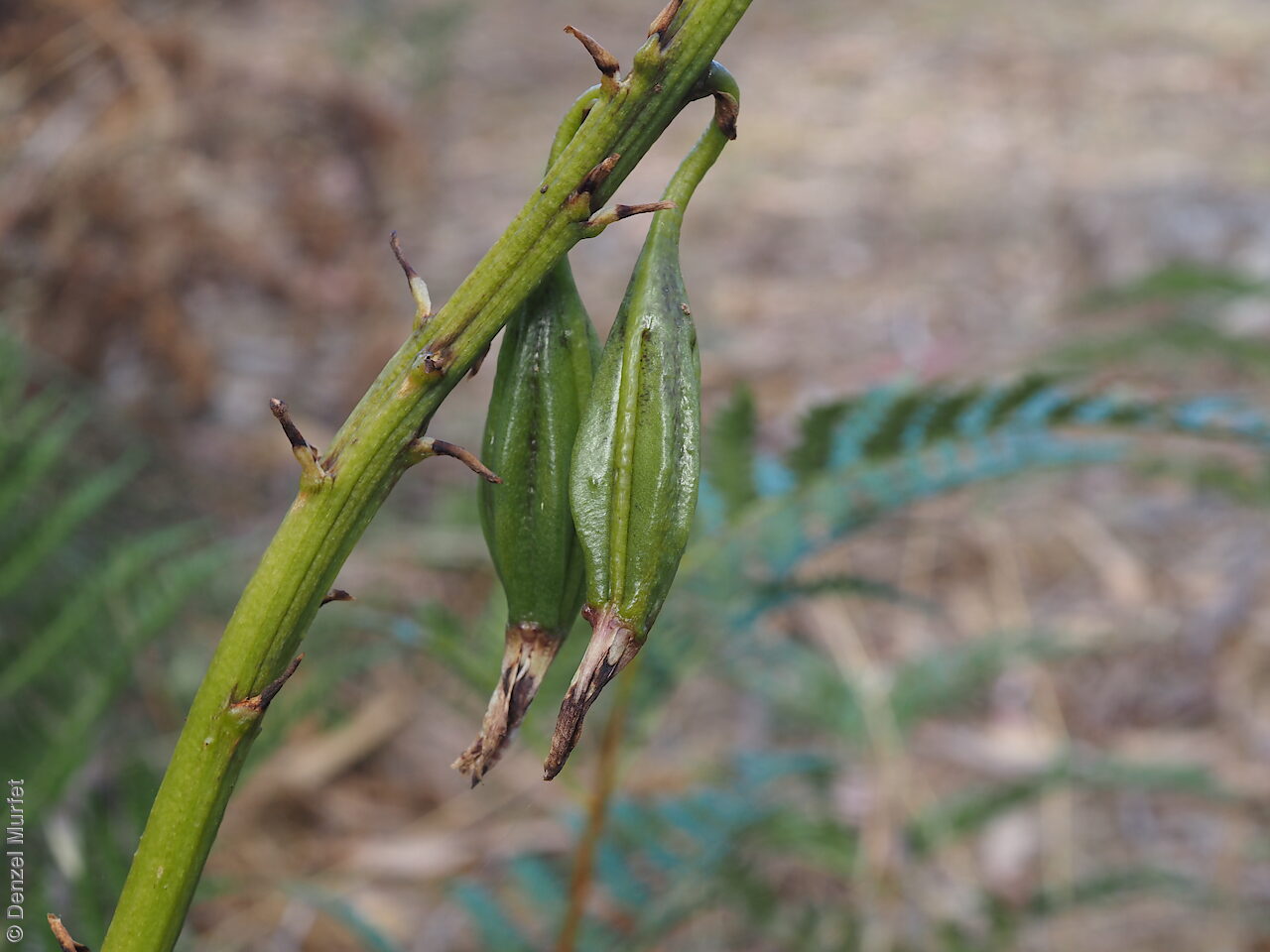
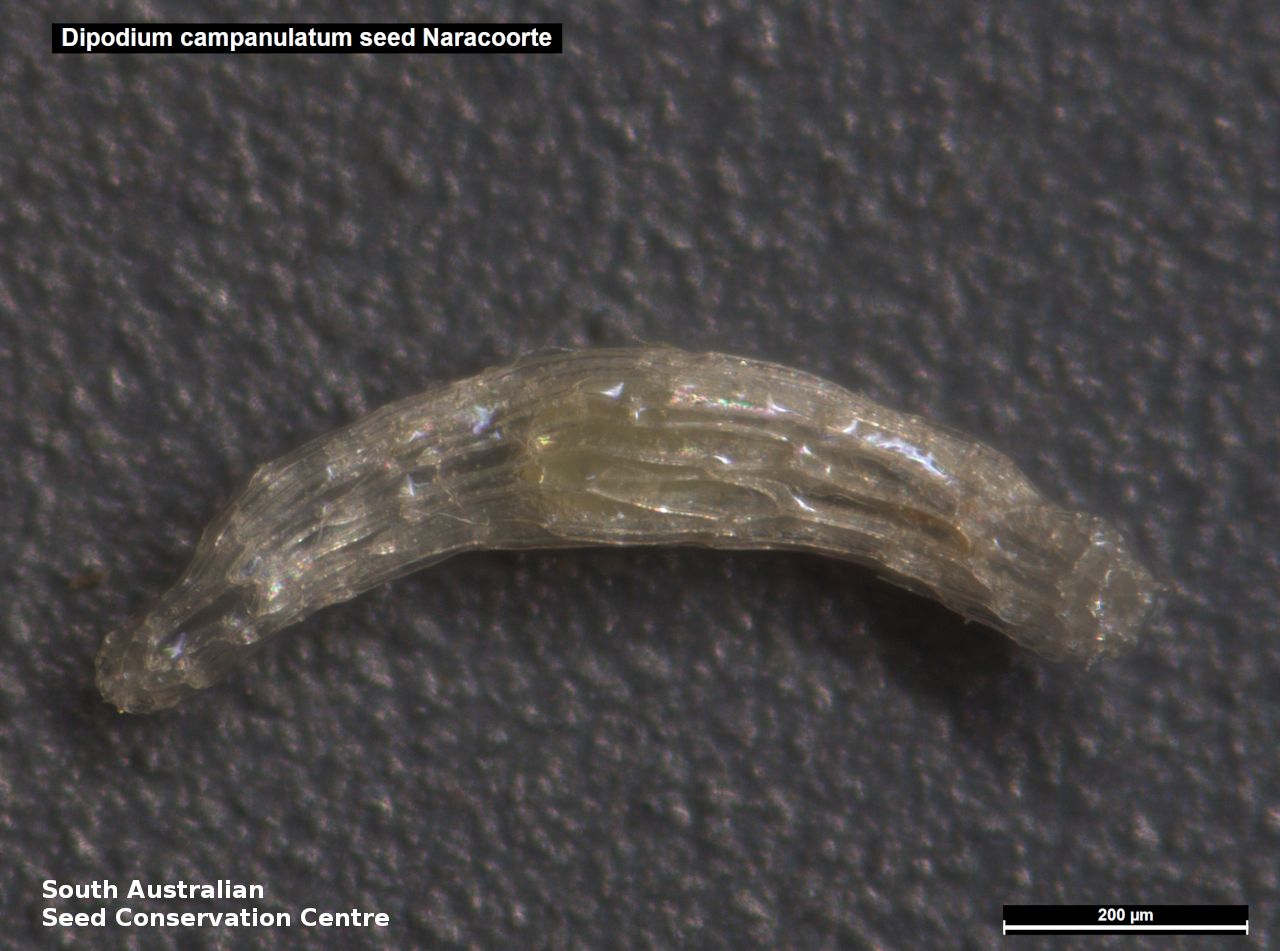
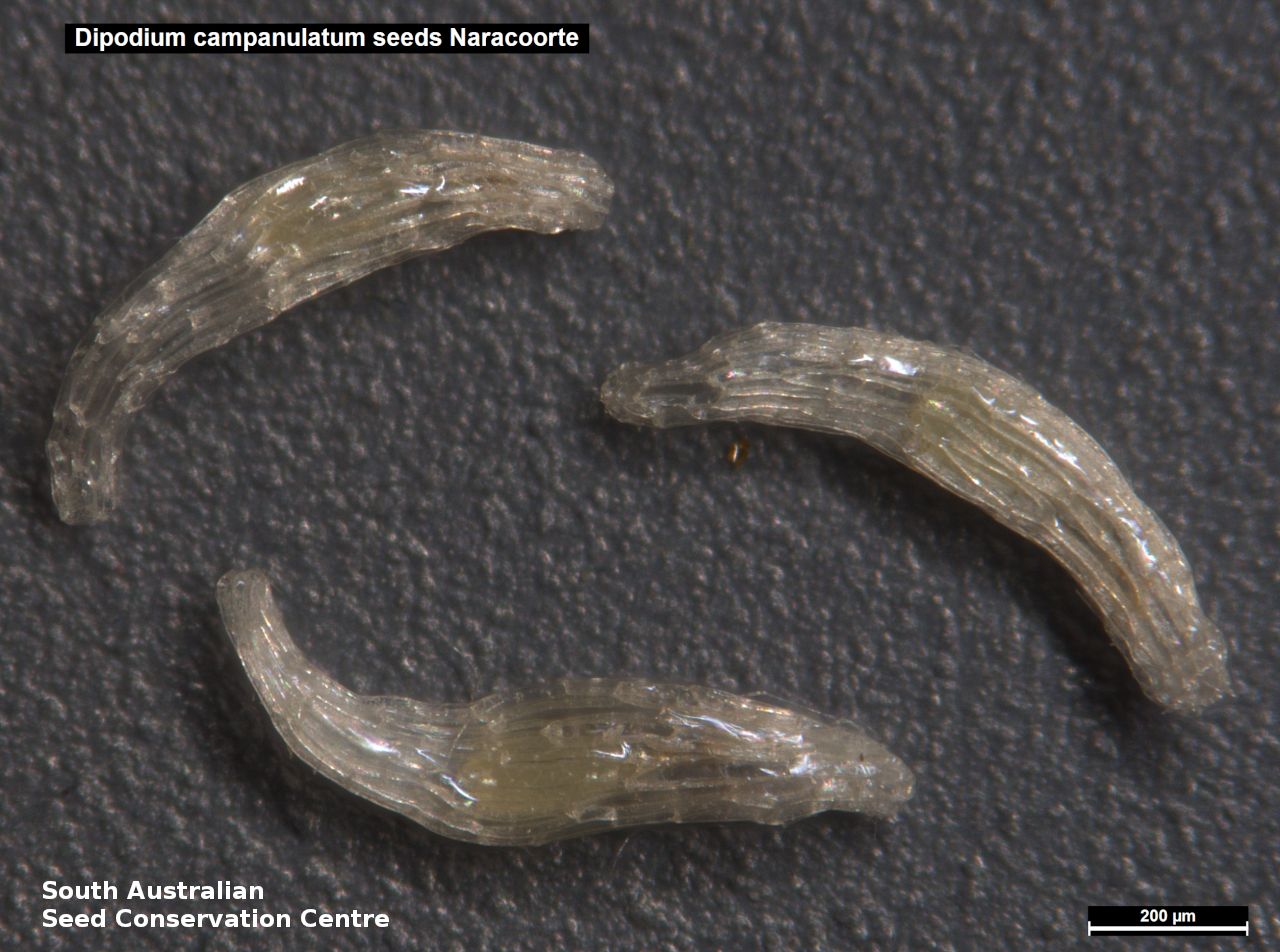
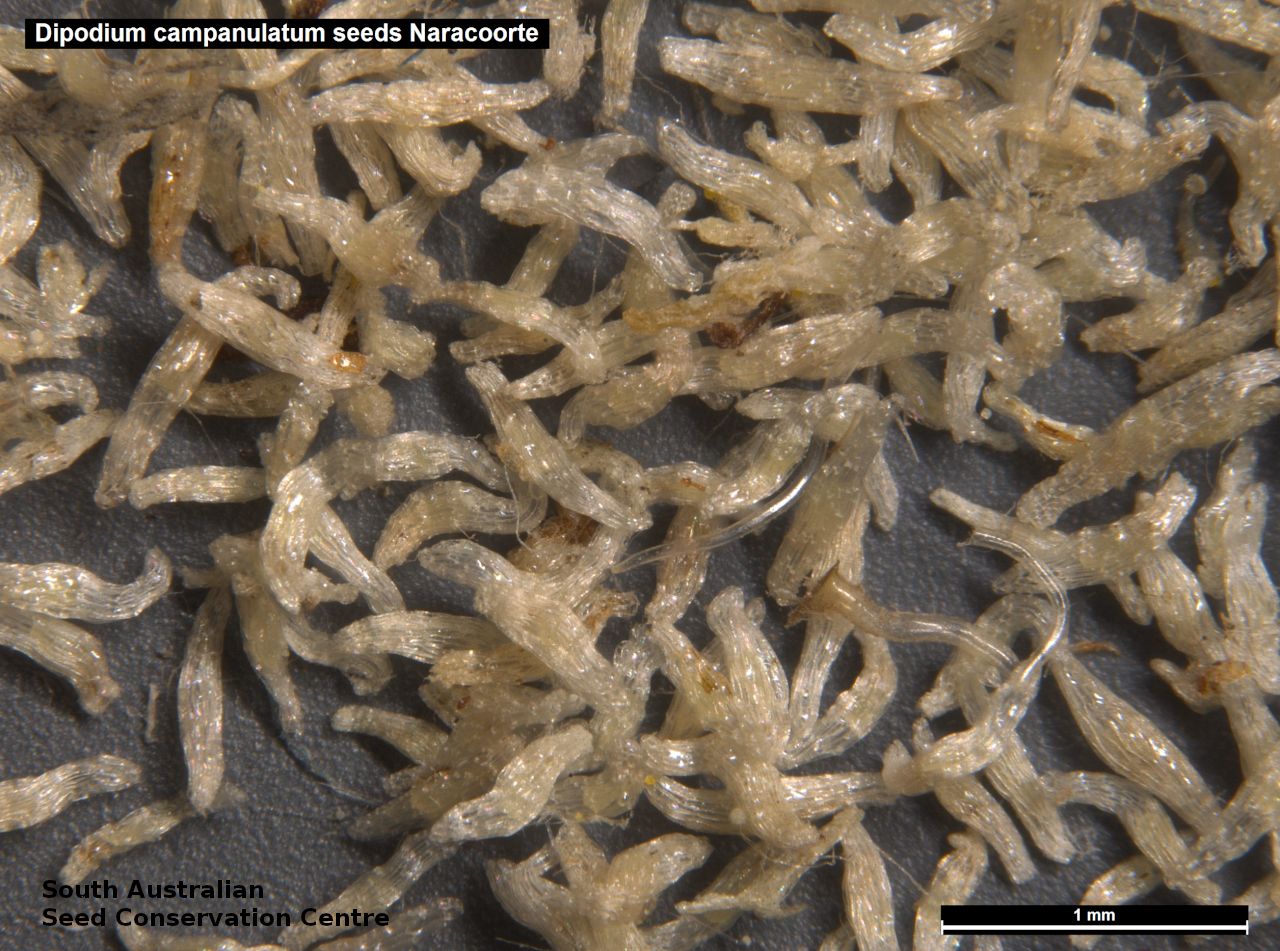


Botanical art
Prior names
Dipodium punctatum unnamed form
Etymology
Dipodium from the Greek 'dis' meaning twice and 'podion' meaning a small foot, referring to the two stalks of the pollen masses. Campanulatum from the Latin 'campana' meaning bell shaped; referring to the shape of the flowers.
Distribution and status
Found in South Australia only in the south-east along the Naracoorte Range growing in stringybark, blue gum or heathy woodland on deep grey sands or limestone. Also found in south-western Victoria. Native. Vulnerable in South Australia. Critically Endangered in Australia.
Herbarium region: South Eastern
NRM region: South East
AVH map: SA distribution map (external link)
Plant description
Terrestrial orchid growing to 70 cm tall with up 35 bell-shaped flowers on a single green to reddish stem. Flowers are white and marked with dark red spots and blotches. It has evenly sized incurved tepals, each 15 mm long. Flowering between December and February. Fruits are brown papery ellipsoid capsule. Seeds are very small seed enclosed in a long narrow mesh-like casing.
Seed collection and propagation
Collect seeds between February and March. Collectplump capsules as they start to dry and turn brown. Pods will split and release the seeds quickly however and will require monitoring. To increase the chances of collecting mature pods it is recommended that a small breathable bag (ie. Organza) to be used to enclose the developing capsules. Place the capsules in a container that will hold fine seeds and leave to dry for a few weeks or until the capsule split. Then carefully hold the capsule and tap it gently to release the seeds. Store the seeds with a desiccant such as dried silica beads or dry rice in an air tight container in a cool and dry place, refrigerator or liquid nitrogen. A total of 1.13g (350,000 seeds) were collected by Cath Dickson in 2016 from the Naracoorte area. The sample contained 22 scapes which included a total of 71 pods.
| Location | No. of seeds (weight grams) | Number of plants | Date collected | Collection number Collection location | Date stored | % Viability | Storage temperature |
|---|---|---|---|---|---|---|---|
| BGA | 196,000 (0.63 g) | 22 | 1-Feb-2016 | DJD3340 South Eastern | 2-May-2017 | N/C | -80°C |
| BGA | 900,000 (2.57 g) | 16 | 31-May-2017 | Abigail Goodman South Eastern | 1-Nov-2017 | N/C | -18°C, -80°C |
| BGA | 155,000 (0.5 g) | 22 | 6-Mar-2016 | DJD3340 South Eastern | 30-Jun-2018 | N/C | -18°C |
Number of plants: This is the number of plants from which the seeds were collected.
Collection location: The Herbarium of South Australia's region name.
% Viability: Percentage of filled healthy seeds determined by a cut test or x-ray.